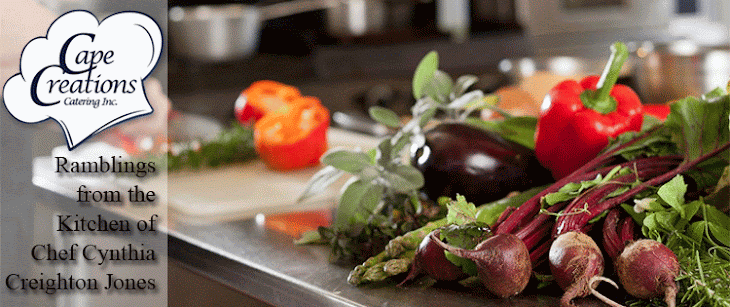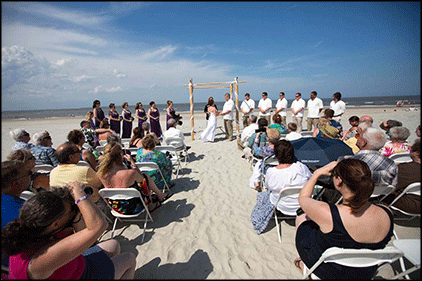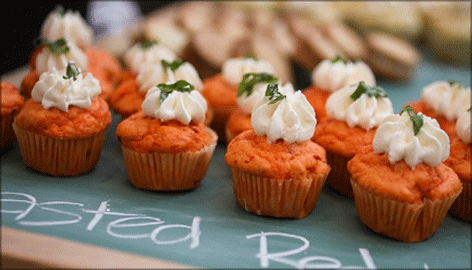The season for horse racing’s Triple Crown – Kentucky Derby,
the Preakness, and the Belmont Stakes – is right around the corner. What better
time to plan a themed party!
The scene around the Preakness and the Belmont Stakes is nothing
to scoff at – but the pageantry, history and all-around good time of the
Kentucky Derby is what makes Churchill Downs so very special on the first Saturday
in May.
 |
| Burgoo and cornbread -- authentic and delcious |
Ladies in flowery dresses and oversized hats are
showstoppers alone, but the culinary legacy of the Kentucky Derby deseres some
credit for making this the most happening weekend of the year in Lousiville.
From beaten biscuits with country ham to the simple and crowd-pleasing beer
cheese to finger-lickin’ good fried chicken – a Derby party offers plenty of
options and plenty of great food.
Top that off with the signature Derby beverage – the Mint
Julep – and you’ll feel like you’ve picked a trifecta at the finish line.
 |
The Hot Brown. (Photo and recipe
courtesy The Brown Hotel) |
Kentucky Derby party food can be simple an authentic – like burgoo
and beer cheese – or simply elegant, like beaten biscuit with country ham or The
Hot Brown.
A Kentucky Derby party catered by Cape Creations was a combination
of casual foods and fancier dishes – including smoked salmon profiteroles.
We’re happy to help plan and prepare your party – we’ll be
ready to serve before post time! However, if you want to have a DIY party, here
are a couple of recipes to get you started:
Kentucky Burgoo
Just like Brunswick stew? Hardly! Many regions of the US
have their own versions of these marvelous and rich one-pot stews. Burgoo got
its start from neighborhood “burgoos” where each family brought canned goods
from their grdens and threw meat in the pot – from chickens to pork to wild game
like rabbits, squirrel and venison. A long, slow cook is required!
Ingredients
1 four- to five-pound hen
6 onions, finely chopped
1 pound beef stew meat
2 green peppers, finely chopped
1 pound (of another meat -- more beef, lamb, pork, chicken,
game, etc.)
1 medium turnip, finely diced
4 quarts water
8 to 10 tomatoes, peeled and chopped (2 large cans)
2 cups shelled fresh butter beans (2 cans drained)
2 cups corn (2 cans drained)
One 10-ounce can tomato puree
2 cups thinly sliced celery
2 cups finely chopped cabbage
2 cups finely chopped carrots
1 red pepper pod
2 cups fresh okra, sliced
1/4 cup salt
1 Tablespoon each lemon juice, Worcestershire sauce, and
sugar
1-1/2 teaspoons coarse black pepper
1/2 teaspoon cayenne
Method
If you make this in 2 parts, on successive days, it is not
such a chore.
1. Put the meat, onions, peppers, turnips, water and
tomatoes in a large pot; bring to a boil and simmer slowly, covered, for about
4 hours. Let cool and strain, setting aside meats.
2. Cut chicken and meat finely, removing all skin, bone, and
gristle. Kitchen scissors are good for this job. Return to stock and
refrigerate.
3. The following day, lift off half of the fat, add all the
veggies. Cook another hour covered until until thick.
4. Add the additional seasonings. If you finish the cooking
in the oven, it will eliminate stirring and watching.
5. Cook, uncovered, at 300 degrees for about 2 hours until
the consistency of a thick stew. This will make a gallon. If made before hand,
reheat in the oven to ensure against scorching.
The Hot Brown
In the 1920's, Louisville, Ky’s., Brown Hotel drew more than
1,200 guests each evening for its dinner dance. In the wee hours of the
morning, the guests would grow tired of dancing and retire to the restaurant
for a bite to eat. According to the hotel’s history of this dish, diners were growing bored
with the traditional ham and eggs, so Chef Fred Schmidt set out to create
something new for his guests. His creation was an open-faced turkey sandwich
with bacon and a delicate Mornay sauce – The Hot Brown.
Ingredients (Makes 2)
1 1/2 tablespoons salted butter
1 1/2 tablespoons all-purpose flour
1 1/2 cups heavy cream
1/4 cup Pecorino Romano cheese, plus extra for garnish
Pinch of ground nutmeg
Salt and pepper
14 oz. sliced roasted turkey breast, slice thick
4 slices of Texas toast (crusts trimmed)
4 slices of bacon
2 Roma tomatoes, sliced in half
Paprika
Parsley
Method
1. In a two-quart saucepan, melt butter and
slowly whisk in flour until combined to form a thick paste or roux. Continue to
cook roux for 2 minutes over medium-low heat, stirring frequently. Whisk heavy
cream into the roux and cook over medium heat until the cream begins to simmer,
about 2-3 minutes.
2. Remove sauce from heat and slowly whisk in Pecorino-Romano
cheese until the Mornay sauce is smooth. Add nutmeg, salt and pepper to taste.
3. For each Hot
Brown, place one slice of toast in an oven safe dish and cover with 7
oz. turkey. Take the two halves of Roma tomato and two toast points and
set them alongside the base of turkey and toast. Pour half of the sauce
over the dish, completely covering it. Sprinkle with additional cheese.
4. Place entire dish under a broiler until cheese begins to brown and bubble.
Remove and cross two pieces of crispy bacon on top. Sprinkle with paprika
and parsley and serve immediately.






































